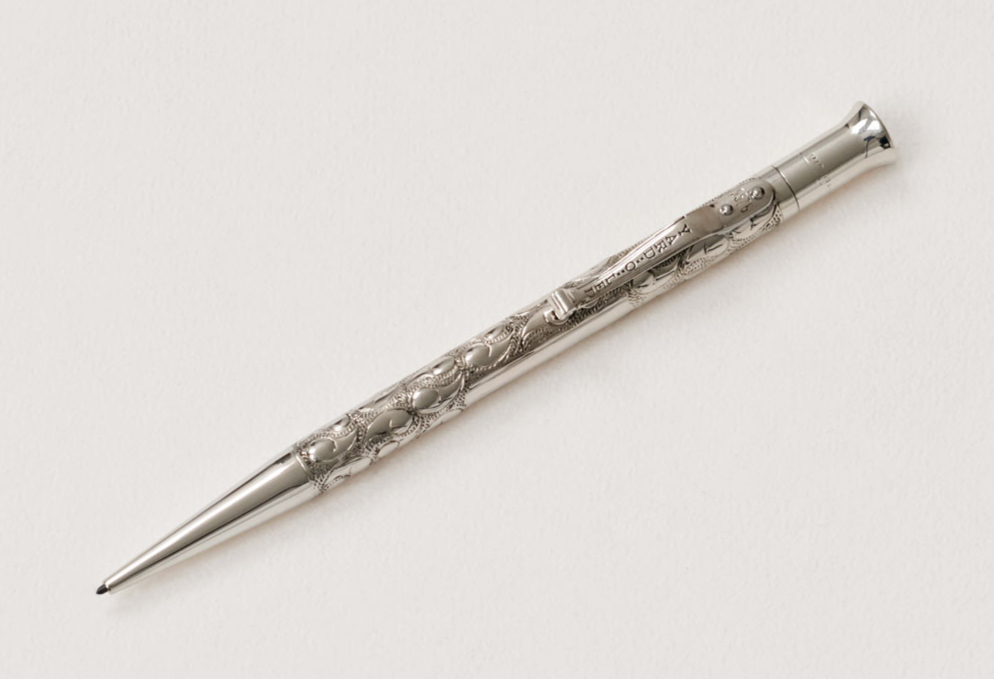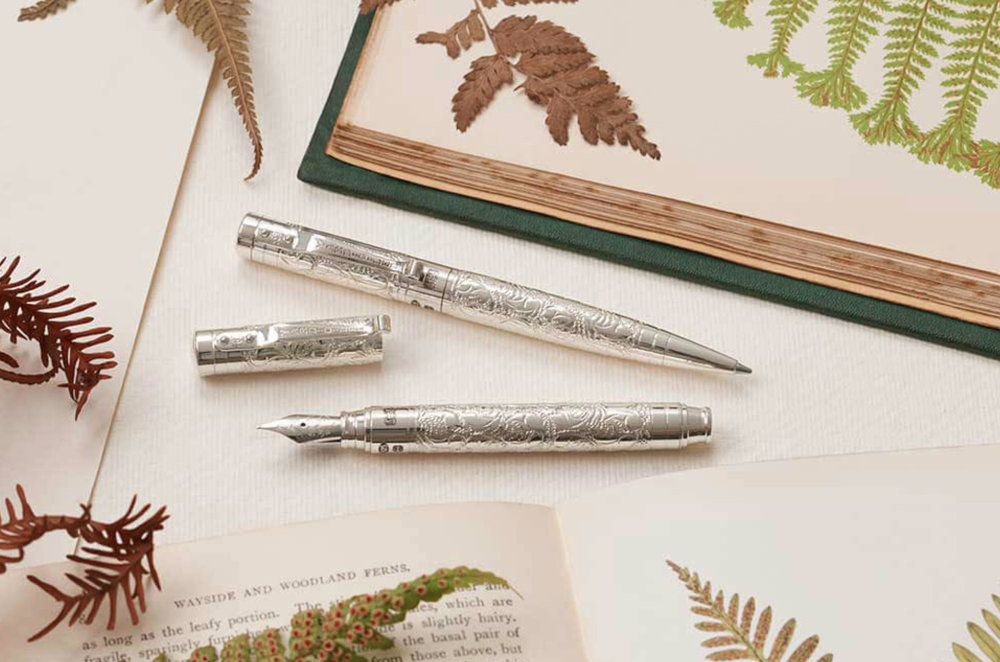My grandfather Harry, a grocer in the north-western mining town of Wigan, owned a fine collection of pens and notebooks. I’ve inherited this interest and I also share with him a love of typewriters — sadly something that has fallen by the wayside since the advent of the personal computer. I still enjoy my pens and notebooks; but one of my great regrets is that all my grandfather’s pens have gone AWOL over the years. He died when I was seven years old and, I suspect, I inherited the pens at too early an age to value them.




One of these writing implements was called Yard-O-Led, a strange name that I never quite understood. Why “led” when it was a lead propelling pencil, and why yard when the housing was no more than five inches in length? I wrote it off in my young mind as a bit of Victorian quackery, designed to impress the feeble of mind.
Now, as it turns out, the story of Yard-O-Led is an interesting one. And there really was a yard of lead lurking in that small barrel — albeit in the form of twelve separate pieces, all of three inches in length. What is just as interesting is that these sterling-silver writing implements are still made today in a factory in Birmingham. They are to be found mainly in Britain at specialist writing implement stores and, occasionally, at jewellers and up-market department stores such as Harrods and Fortnum and Mason. Apparently it’s a struggle to keep the British market supplied, such is the demand.

The fascinating story starts with a German immigrant, Leopold Brenner (see comment below from Brenner’s grandson who points out that is name was actually Ludwig and not Leopold), who settled in London’s jewellery district, Hatton Garden, before the first world war. In 1934 he took out a patent on his pencil mechanism featuring those twelve three-inch leads. As a jeweller by trade, he combined his skill as a silversmith with his mechanical prowess in engineering the smooth feeding of those separate lengths of graphite.

One of my favourite sites covering fine watches and writing instruments, Quill & Pad, takes up the story. It answers most questions but I never did find out why the brand name is Yard-O-Led and not Yard-O-Lead. Perhaps it was a play on the past tense of the verb — one strip of lead leading to another, being led through the barrel one after the other. I can’t believe it was simply a spelling error because people were much better with such things eighty years ago and would not have confused lead with led as is so often the case today. Still, with today’s cavalier attitude to brand names I suppose anything goes.
One thing for sure, Yard-O-Led has a certain cachet. No doubt had it been introduced today, or had Leopold stayed in his native Germany, the pencil would have become a soulless Meter-O-Led.
My next task is to search for Grandpa Evans’s long-neglected silver Yard-O-Led. It could still be lurking somewhere in the attic. If not I might actually have to buy one to scratch the itch that this article has aroused.
_______________
Images from the Yard-O-Led website and from Quill & Pad.


Good for holidays!
I don’t know if site is still active, but I will clarify a few points. The pencil was only designed to be able to have a long lead and 12 spare leads around the mechanism. However then came the decision of naming the company and my Grandfather and my mother discussed it one evening at the dining room table. The total length of all the leads was approximately 1 yard, hence Yard and the o led was added to make it sound oldie worldly. Yes it was that simple and the pencils became an instant success. Oh and actually his first name was not Leopold it was Ludwig. It appeared incorrectly in YoL catalogues as the later owner of the company only knew my Grandfather as Mr Brenner, which was usual when employing a salesman in 1946. The size of the leads was 3/64ths of an inch a common size during the 1930’s, now sold as 1.18mm
Many thanks, Colin. Indeed, the site is still alive and thriving. That’s a bit of fascinating background and I am grateful that you found the time to respond. I am sure readers of the article will find it interesting. Mike
I was interested to read Colin’s information. I have my late mother’s Yard-O-Lette, 3 and a half inch rolled gold propelling pencil. It’s square with a barley pattern and 3 plain panels of decreasing length on each side; Art Deco style. There is a single piece of lead still useable, with 4 circular compartments when viewed from the top of the mechanism, plus what looks like room to put an additional piece in the top part of the metal shaft. I believe it must be pre-War as it has no hallmark and the clip is not rivetted. It was amongst her most treasured possessions; given to her by a close friend, possibly before but most likely during the war (I wish I’d paid more attention!)
Thank you, Roberta. There is definitely something about the Yard-O-Led, especially in silver…
I’m only more than two and a half years late in catching this article! Procrastination again?
I must however note that I am the proud possessor and user of a rolled gold Yard-O-Led pencil. This was given to me by my best man at my wedding and the date of 27th July 1968 is engraved on the side of the barrel. It has therefore given more than fifty-one years faithful service.
Delighted they are still being produced.
Ah, but nothing escapes my eagle eye, even after 30 months. I will reread the article now!
Lovely pencils. Thank you for introducing them to me. Might not the modern modern era equivalent be Metre-o-led, rather than Meter?
Yes I am always in two minds on the spelling which is of course optional. But since the inventor was German he would have uses meter whereas metre is French. Then again, here in the U.K. we use theatre, centre so more confusion. Whatever, meter/re is soulless compared with the old yard and foot.
Hello Mike,
Had Herr Brenner (and we all know that calling him Leopold would have been too familiar for a proper German!) stayed in Germany, it would have been Meter-O-Blei!